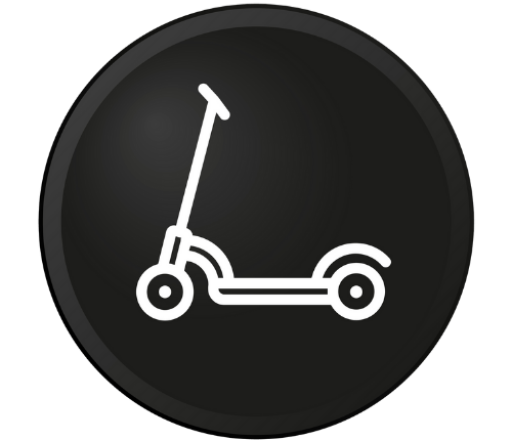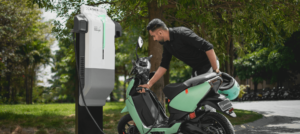Electric scooters, or battery scooties, are becoming increasingly popular among children as a fun and efficient mode of transportation.
However, as a parent, it’s essential to consider various factors to ensure your child’s safety and enjoyment.
This guide covers everything parents need to know about choosing and maintaining a battery scooty for kids.
1. Safety First
a. Age and Maturity
- Consideration: Ensure that your child is old enough and mature enough to handle an electric scooter. Manufacturers typically recommend battery scooties for children aged 8 and up.
- Tips: Assess your child’s ability to follow safety rules and handle the responsibility of riding a scooter.
b. Safety Gear
- Essential Gear:
- Helmet: A properly fitting helmet is crucial to protect your child’s head.
- Knee and Elbow Pads: These provide extra protection in case of falls.
- Wrist Guards: Help protect your child’s wrists, which are often injured in falls.
- Tips: Ensure all safety gear meets the necessary safety standards and fits well.
c. Supervision and Training
- Consideration: Children should be supervised until they are confident and responsible riders.
- Tips: Teach your child how to ride safely, including starting, stopping, turning, and emergency procedures.
2. Choosing the Right Model
a. Size and Weight
- Consideration: The scooter should be appropriate for your child’s height and weight. Scooters that are too large or heavy can be difficult for children to control.
- Example: Lightweight models with adjustable handlebars are ideal for growing children.
b. Speed and Power
- Consideration: Kids’ scooters typically have lower speeds and power to ensure safety. Look for models with a top speed of around 10-12 mph.
- Example: Scooters with speed limiters or parental controls can offer added safety.
c. Battery Life and Range
- Consideration: A longer battery life means more riding time. However, the range should be manageable for your child’s use.
- Example: A range of 10-15 miles is usually sufficient for kids.
d. Build Quality and Durability
- Consideration: Ensure the scooter is made of durable materials that can withstand rough handling.
- Example: Look for scooters with sturdy frames, quality wheels, and robust braking systems.
3. Key Features to Look For
a. Braking System
- Consideration: Effective brakes are crucial for safety. Electric scooters for kids often feature rear fender brakes or hand-operated brakes.
- Tips: Test the brakes regularly and ensure your child knows how to use them properly.
b. Tires
- Consideration: Pneumatic (air-filled) tires provide better shock absorption, while solid tires are maintenance-free.
- Tips: Choose tires based on the typical riding surface (pavement, grass, etc.).
c. Lights and Reflectors
- Consideration: Visibility is key to safety. Ensure the scooter has adequate lighting for evening rides.
- Tips: Front and rear LED lights, as well as reflectors, enhance visibility.
d. Speed Controls and Safety Locks
- Consideration: Some scooters come with speed control settings and safety locks to prevent unauthorized use.
- Tips: Utilize these features to maintain control over the scooter’s performance and security.
4. Maintenance Tips
a. Regular Inspection
- Steps:
- Check the tires for wear and proper inflation.
- Inspect the brakes to ensure they are functioning correctly.
- Examine the battery and connections for any signs of damage or wear.
- Tips: Perform these checks regularly to keep the scooter in safe working condition.
b. Battery Care
- Steps:
- Charge the battery according to the manufacturer’s instructions.
- Avoid overcharging and store the scooter in a cool, dry place.
- Monitor the battery’s performance and replace it if you notice a significant drop in range.
- Tips: Teach your child to plug in the scooter after use to ensure it’s ready for the next ride.
c. Cleaning
- Steps:
- Wipe down the scooter with a damp cloth to remove dirt and grime.
- Avoid using high-pressure water to prevent damage to electrical components.
- Tips: Regular cleaning keeps the scooter looking good and prevents buildup that could interfere with its operation.
5. Teaching Responsible Riding
a. Rules and Etiquette
- Consideration: Educate your child about traffic rules and the importance of riding respectfully.
- Tips: Emphasize staying on sidewalks or designated bike paths, yielding to pedestrians, and avoiding distractions like using a phone while riding.
b. Emergency Preparedness
- Consideration: Make sure your child knows what to do in case of an emergency.
- Tips: Practice emergency stops and discuss what to do if the scooter breaks down or they encounter a dangerous situation.
Conclusion
Choosing the right battery scooty for your child involves careful consideration of their safety, the scooter’s features, and proper maintenance.
By investing in quality safety gear, selecting an appropriate model, and teaching your child responsible riding habits, you can ensure a safe and enjoyable experience.
With the right preparation and supervision, a battery scooty can be a fun and practical way for your child to get around.



